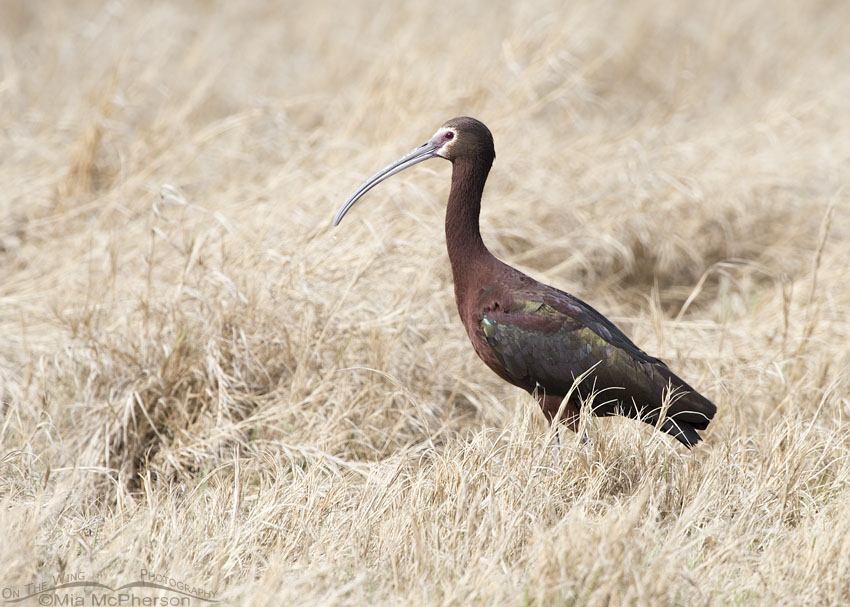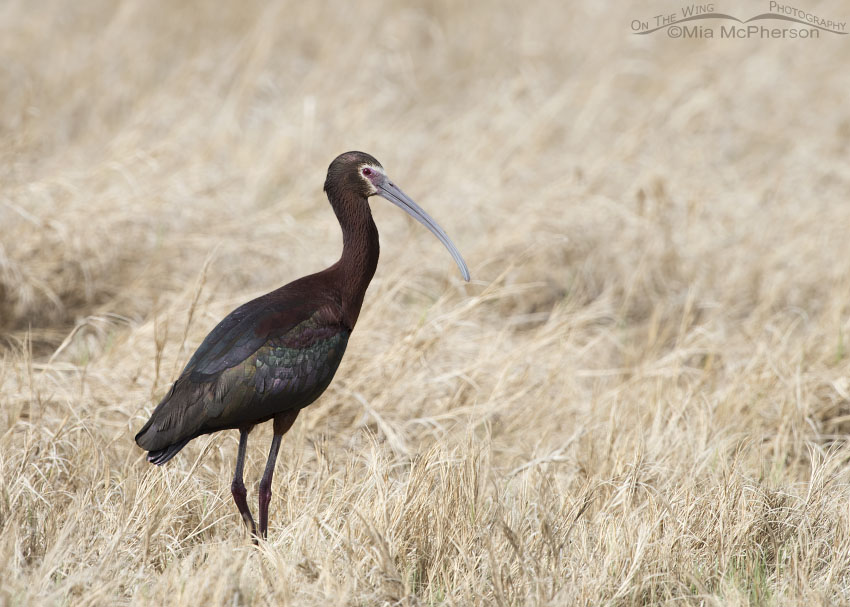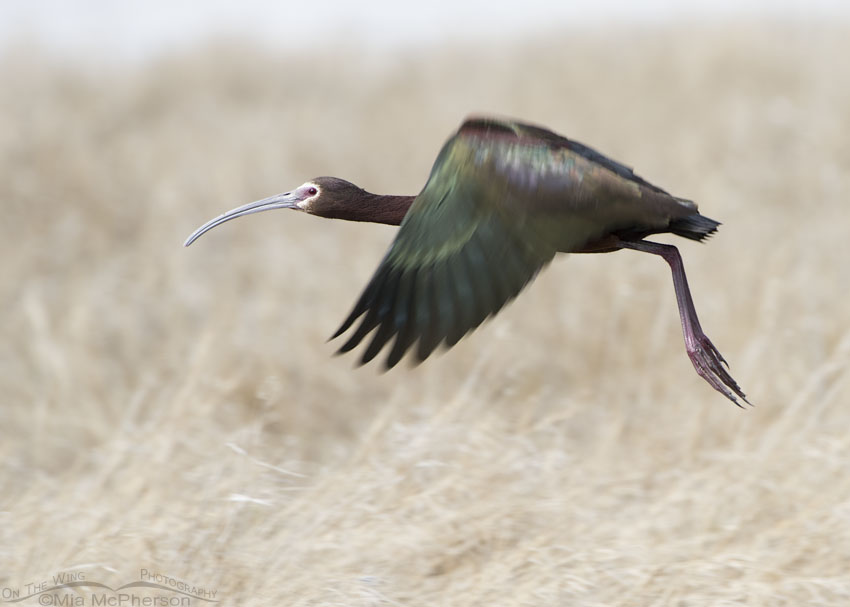 White-faced Ibis in a marsh – Nikon D810, f7.1, 1/1000, ISO 400, Nikkor 500mm VR with 1.4x TC, natural light
White-faced Ibis in a marsh – Nikon D810, f7.1, 1/1000, ISO 400, Nikkor 500mm VR with 1.4x TC, natural light
For weeks I have been seeing White-faced Ibis fly overs and yesterday I had my first opportunity to photograph them for the year at Bear River Migratory Bird Refuge. The ibis are in breeding plumage now and if they haven’t begun to nest yet they will do so soon.
 Box Elder County White-faced Ibis – Nikon D810, f7.1, 1/1000, ISO 400, Nikkor 500mm VR with 1.4x TC, natural light
Box Elder County White-faced Ibis – Nikon D810, f7.1, 1/1000, ISO 400, Nikkor 500mm VR with 1.4x TC, natural light
The largest nesting colony of White-faced Ibis occurs right here in Utah in the marshes surrounding the Great Salt Lake. There are mornings when I see dozens of wedges of them in flight when I am on the way to go photographing birds. I saw several flocks of them feeding yesterday while on the auto tour route at the refuge but I was only able to get close to five of them that were near the road in some grasses.
White-faced Ibis get their name from the white border around the lores and eyes shown in this image but that border is not present when they are in nonbreeding plumage or when they are juveniles.
 White-faced Ibis lift off – Nikon D810, f7.1, 1/400, ISO 400, +1.0 EV, Nikkor 500mm VR with 1.4x TC, natural light
White-faced Ibis lift off – Nikon D810, f7.1, 1/400, ISO 400, +1.0 EV, Nikkor 500mm VR with 1.4x TC, natural light
When the White-faced Ibis left the grasses I was able to get a few lift off images but my shutter speed had dropped and while I was able to get the feet, legs, neck, face and bill sharp the wings showed motion blur. At first I didn’t care for the blur but it has grown on me now.
On another note, I also saw a North American Beaver at the refuge yesterday, my first for that location. It was a rather large beaver and I was only able to get poor quality, back lit images of it which was frustrating but I was still delighted to see it.
You just never know what you will see while out photographing birds.
Life is good.
Mia
Click here to see more of my White-faced Ibis photos plus facts and information about this species.


Nice images and interesting post. I will be watching for the beaver on my next visit.
Beautiful and interesting!
Beautiful photos! And I rather like the blur. It’s just a little softness in an otherwise sharp image. You are fortunate to see a great variety of birds down there. Wish we had more in Montana.
Perfectly lit, perfectly exposed – you rarely get to see the true color of these sometimes almost black looking birds. Wonderful!
Beautiful images, Mia
All three images are interesting, but particularly like the first and third…didn’t really notice “the blur”, but loved the flight position of head, neck, wings, feet and slightly hunched back. I’ve always had a soft spot in my heart for any ibis, as an ibis, “Sebastian”, was the mascot of the University of Miami, Coral Gables, Fla. where I got my BA some 100 years ago…
Beautiful shots, Mia. It’s great to see other “non-bird” wildlife out there too. Mule deer, muskrats, beavers, skunks, raccoons, badgers, and other mammals call it home as well (and more than a few insects, reptiles, etc.).
You have a great collection of incredible images…. my complements Mia.
You have done well. Yes, as you say, “life is good.” ;-)))